Wife of Declaration Signer William Floyd
Image: William Floyd House
Mastic Beach, Long Island
Now part of Fire Island National Park
Hannah Jones was born in February 1739, the daughter of William Jones of Southampton, Long Island, Island, New York. William Floyd was born on December 17, 1734, the son of Nicoll and Tabitha Floyd, on their prosperous plantation at Mastic, Long Island, New York. His father, a rich and respectable landholder of Welsh ancestry, kept the children busy with chores. As a result, William’s education consisted only of informal instruction at home.
In 1754, William’s father and mother died within 2 months of each other, and he inherited the Floyd estate on Long Island, along with the responsibility of caring for his brothers and sisters. The property was highly productive, with grains, forage, vegetables; and well stocked with cattle and fruit trees. Fronting on the Atlantic Ocean, the property also had a shipping dock used for trade, and access to fishing, oysters, and a variety of seafood. His accounts tell us that he dealt widely with carpenters, brick masons, farriers, butchers, and a variety of tradespeople.
William Floyd married Hannah Jones on August 20, 1760. Little is known of the young woman beyond the fact that she was a well-brought-up girl, who helped care for William’s family and assisted in managing the plantation. By 1767, they had three children: one son and two daughters. Nicoll Floyd, the oldest of the children, married Phebe Gelston of New York. Mary Floyd married Colonel Benjamin Tallmadge of Litchfield, Connecticut, and Catharine married Dr. Samuel Clarkson of Philadelphia.
As a wealthy landowner, Floyd acquired stature and influence in his community. His manor house was the meeting place of an extensive circle of connections and acquaintances, including many persons from distinguished families with excellent formal educations, and Floyd absorbed much knowledge through them.
Hannah Floyd was a public-spirited and patriotic woman, and upheld uncomplainingly the course her husband pursued. From the moment Floyd began to take part in public life, Hannah was left with the management of his affairs. He was town trustee (1769-71), and moved up in the ranks of the Suffolk County militia to the rank of colonel.
Like many of his neighbors Floyd had strong ties to Connecticut, which was easier to reach across Long Island Sound than it was to travel overland into New York City. Floyd’s father had lent money to Connecticut Governor Jonathan Trumbull, and the Floyd family had relatives and friends in Middletown.
As the difficulties between the colonies and Great Britain developed, Floyd became increasingly prominent in the politics of eastern Long Island. In 1769, he was elected to the Provincial Assembly, and became acquainted with political figures from other parts of the Colony.
The Revolutionary movement in New York was much less fervent, and started later than that in the other colonies. The spirited Massachusetts opposition to the Tea Act in 1773 created the first major ferment in New York. One of the scattered focal points was eastern Long Island. Floyd and many of his neighbors attended meetings that extended sympathy and aid to Massachusetts, and protested the closing of the port of Boston by the British.
Despite such local outbursts, by the end of 1774, New York was one of only two Colonies, Georgia being the other, in which the patriots did not control the government. For this reason, the Revolutionaries operated mainly on a county basis. William Floyd embraced warmly the cause of independence, and Suffolk County appointed him as a delegate to the First Continental Congress, which met in Philadelphia on September 5, 1774.
The English Parliament’s Intolerable acts led to the Battles of Lexington and Concord on April 19, 1775. The colony of New York elected ten men to attend the Second Continental Congress, but only four of them attended, including William Floyd. He arrived in Philadelphia on May 10, 1775, and soon found himself on several committees and spent part of his time on inspection tours, visits, and meeting with other delegations.
On September 5, 1775, William Floyd was nominated Colonel of the Western Regiment of Suffolk County at a meeting in Smithtown. Taking over and inspecting this new command Floyd reported, “The Regiment is about two-thirds furnished with bayonets, and the others are getting them as fast as they can be made. They are furnished with half pound of powder and two pound of ball per man and a Magazine in the Regiment to furnish them…” Floyd shared his time between his military duties and his Congressional duties.
As a delegate to the Continental Congress, Floyd kept the New York Provincial Congress informed about actions such as reconciliation with Great Britain, the treatment of Loyalists, Indian Affairs, establishment of local military defense, aid to the Continental Army, the issuance of paper money, and other matters that the local colony assembly needed to know about or take action upon. Edmund Rutledge, a Delegate from South Carolina, said of Floyd that he was among the “good men who never quit their chairs,” implying that Floyd seldom spoke on the floor, but was frequently present and voting for issues. But worry about the welfare of his family presented a major detraction.
As the Congress was arguing the merits of independence, New York had not instructed its delegation how to vote, so Floyd and his fellow New York delegates had their hands tied until the New York Provincial Congress came to some conclusion. While the Continental Congress voted for Richard Henry Lee’s resolution for American independence on July 2, 1776, and then spent two days adjusting the language of the declaration, the New York delegation had to remain silent.
Finally, on July 9, 1776, the New York provincial Congress voted to approve independence and forwarded that information to their delegation in Philadelphia on July 11, 1776. Although independence had been approved and the language of the document supporting it had been modified and approved, it was not until August 2, 1776, that most of the delegates signed the embossed copy of the Declaration of Independence. Among them was William Floyd, and he was one of the first of the signers to suffer for the stand which he had taken.

William Floyd’s Signature
On the Declaration of Independence
The ink was barely dry on the Declaration when the British landed on Long Island and defeated Washington in the Battle of Long Island on August 27, 1776. The battle, the largest battle of the entire conflict, and its immediate aftermath were marked by the British capture of New York City (which it held for the entire war), the execution of the American Nathan Hale, and the burning of nearly a quarter of the city’s buildings.
In the following three months, British forces overran the entire length of Long Island. It was not a safe place to be if you were sympathetic to the revolutionary cause. It would have been an especially dangerous place if your husband had just signed the Declaration of Independence.
Hannah Floyd barely had time to bury the family silver before she and her three young children, with a few friends and neighbors, sailed across Long Island Sound and took refuge with friends in Middletown, Connecticut. Hannah enrolled her son and two daughters in school in Middletown, and Floyd visited whenever he could be excused from his duties in the Congress.
While Floyd was still at Philadelphia, the British took possession of the Floyd plantation at Mastic, which included a fine plantation with an abundance fine timber and firewood, and a handsome mansion. The house was occupied by a company of British horsemen, who made it their meeting place during the remainder of the war. Loyalists plundered his lands and belongings.
On October 17, 1776, William Floyd wrote, “I am now going to try to get some of my effects from the island if it is possible, and shall be absent from Congress a few days, I beg you would excuse me as it is the first time I have absented myself.” On October 28, 1776, Connecticut Governor Jonathan Trumbull ordered an armed party to cross the Sound and bring back Floyd’s possessions.
All livestock and crops were taken by the British – the barns and the house were used for stabling the horses of the British troops, the fruit and ornamental trees were wantonly cut down, and acres of the timber destroyed. For nearly seven years, Floyd and his family were refugees, and he was often in dire straits, having nothing but his pay as a delegate in Congress to support himself and his family.
William Floyd continued to faithfully serve both his military obligations, for which he was eventually raised to Major General, and his duty as a delegate to the Continental Congress, where he served on several committees. He served a short term in the New York State Senate, but in January 1779 was sent back to the Continental Congress.
Hannah Jones Floyd would never see her Long Island home again; the anxieties and hardships to which she had been subjected had undermined her health. She died May 16, 1781 at the age of 41, and was buried in Middletown, CT.
After the war, Floyd returned to his Long Island estate to find ransacked buildings, desolate fields, uprooted trees, burned fences, lost stock, and his house unlivable. He rebuilt the house and the next year, he married Joanna Strong of Mastic, with whom he had two daughters, Anna and Eliza.
In 1784, Floyd purchased an uninhabited tract of land in Central New York, and devoted several successive summers to its clearing. He supplemented this three years later by obtaining a State grant of more than 10,000 acres in the area. Although he was in his fifties when he undertook this project, his bodily strength and activity were much greater than many who were years younger. He spent most of his summers visiting and developing the acreage.
Under his skilful management, a considerable portion of the tract was converted into a well-cultivated farm. He chose an area within that acreage that was situated on the Mohawk River, at what is now Westernville, New York, to build a new home, almost a carbon copy of his old estate at Mastic. By 1794, Floyd had deeded his Long Island estate to his son Nicoll.
Floyd was elected to the first US House of Representatives, serving from 1789 to 1791, served as a presidential elector on four occasions, helped rewrite the New York State Constitution. He was not a writer nor an orator, but in the work of the different bodies in which he served, he was noted for his thorough knowledge of the business before him. He continued to participate in public affairs; he was an early and strong supporter of Thomas Jefferson and the movement that made him the second President of the United States.
In 1803, at the age of 69, Floyd moved his young family to the new home he had built at Westernville. Although it is sometimes referred to as his retirement home, William had no intention of retiring. There he was elected in 1808 to represent that region in the New York State Senate.
William Floyd died there on August 4, 1821, at his home in Westernville at the age of 86. He was buried there in the cemetery behind the Presbyterian Church.
SOURCES
William Floyd
Hannah Jones
Hannah Jones Floyd
The Life of a Patriot
William Floyd: New York
Wikipedia: William Floyd
General William Floyd Grave
General William Floyd House
Major General William Anson Floyd
Signer of the Declaration of Independence
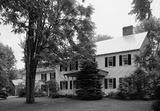
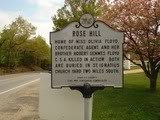

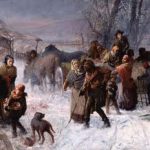
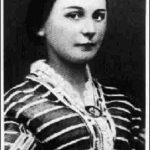
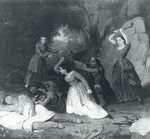
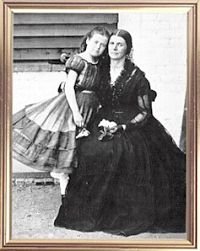
For my graduate studies, I am investigating the life of Hannah Jones who is rarely mentioned in history beyond a sentence and her death in Middletown do to “hardship.” Your blog includes useful information about William Floyd and some details about Hannah. I am interested in finding out more about her life as a refugee in Connecticut and her role as a wife and mother as part of the “Cult of Domesticity” and as an independent woman who supported the American Revolution. I expect my investigation to require the use of primary sources and artifacts such as diaries, letters, correspondences, plantation records, newspaper articles, historical site visits, library visits (Long Island, Connecticut, Westernville), family interviews, interviews with experts/ historians, church records, bureaucratic records, land records and of course bibliographies of people like yourself who have completed previous research. So thank you!
P.S. Do you know: (Did the family recover the silver?)